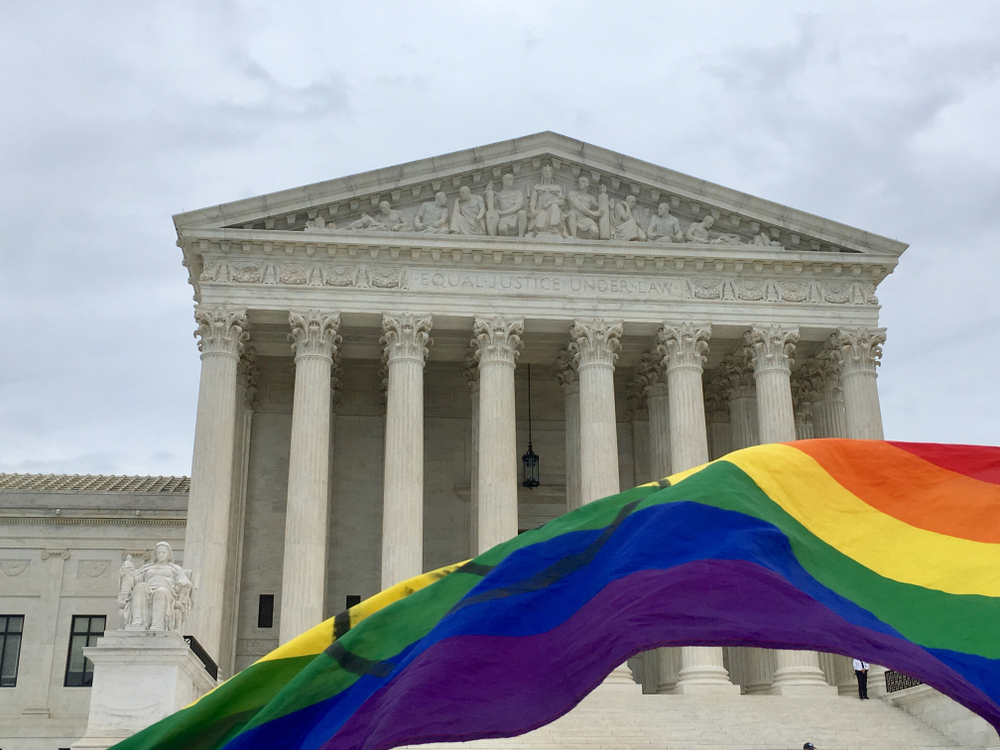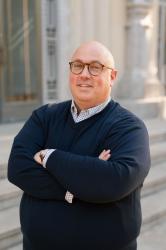First Amendment scholar Michael McConnell may have understated the case when he wrote that “the free exercise clause may well be the most philosophically interesting and distinctive feature of the American Constitution.” There is no other part of the Constitution that is so unprecedented among other national constitutions and involves such an interdisciplinary effort to decipher, extrapolate, and apply in constantly evolving social and cultural circumstances. Judge McConnell has dedicated considerable intellectual energy to establishing the historical provenance of the constitutional guarantee of free exercise, which is not derived from the Constitution but protected by it. And it arose to accommodate, rather than to encourage, the religious diversity of the colonies. The stability of a federal government that required cooperation from colonists and colonies had to respect that diversity and maintain religious neutrality. It did so through the Free Exercise and Establishment Clauses respectively.
A lot has changed since the founding era. The United States extends now from coast to coast and beyond. The Free Exercise and Establishment Clauses have been made applicable to the states. Religious communities have not remained concentrated in specific regions, and immigration and conversion have resulted in a religious diversity that transcends what is internal to the Christian faith. In the most recent decades, religious affiliation and practice have declined, and suspicion of religious practice has increased.
Legal scholar Thomas C. Berg has identified ours as a fractured, acrimonious era and, rightly, identifies religious liberty as providing one important solution to this in his award-winning book Religious Liberty in a Polarized Age. I wholeheartedly agree with Berg’s assessment that it is “sad … and incongruous” when disputes over religious liberty “fuel polarization.” Religious freedom is, Berg argues, “meant not to aggravate, but rather to calm, conflict among deeply held views.” Berg articulates the strongest case for his position, but despite this the scheme falls short in some significant ways.
The most insightful part of Berg’s work is his analysis of the factors that have produced the social and cultural polarization we’re experiencing. Clearly, our present circumstances are complex, and divisions related to “views on any debated issue have come to correlate with … views on other debated issues.” We have divided into two camps, each with accepted orthodoxies on a variety of issues that may or may not have any coherence among them. Berg identifies partisan politics as the source of this phenomenon. This division is exacerbated by media that drive ever-increasing rates of “self-sorting” into tribes. Fewer and fewer Americans have even casual exposure to those who are different from them, which creates fear, resentment, and anger. These are precisely the things that define much of our political discourse. Berg proposes strong support for “religious liberty where Republican partisans have often resisted it … and where Democratic partisans have often resisted it”—essentially in all the places where either of these two tribes dominate.
For all the helpful discussion of polarization in part 1, later parts of the book present significant problems. Berg dedicates significant space to framing religious exercise as an important and even nonnegotiable aspect of personal identity even while acknowledging that there are other ways to arrive at arguments for religious freedom. Berg is not at all dismissive of these arguments, especially ones that are religious or theological in nature. In a plural society, especially one marked by religious liberty, we must be open to whatever intellectual path leads citizens to their conclusions on the matter. The problem is that he focuses on “the distinctive importance of religion in terms of personal identity” (emphasis added). That may be, but to begin with this framing of the significance of religion is not one that will produce a durable détente between the polarized factions that Berg has already identified.
But first, why is Berg phrasing the importance of religion in this way? Because he is setting up a comparison between religious identity and LGBTQ identity to analogize free exercise rights and legal protections for various LGBTQ issues, especially same sex marriage. The two are similar, according to Berg, because of three factors. First, each involves or constitutes conduct that is inseparable from identity. Therefore, a failure to accommodate the distinctive conduct associated with each does harm to a person’s identity. Second, each requires conduct in a public setting—marriage and religious practice have both private and public aspects. And third, there is a shared kinship between both groups, which have suffered disabilities as the government has historically been hostile or indifferent toward each at different times in history.
This analogy fails at some significant points entirely independent of whether the legal protection of any particular right is legitimate. First, Berg merely assumes that the pursuit of protecting “personal identity” is a legitimate function of the state. There is no part of the U.S. Constitution that expresses any concern with interiority in the way that concepts of personal identity require. The origin of constitutional protections of specific actions or behavior may be debated, but that origin certainly cannot be psychological innovations that have emerged in the centuries after the drafting of the Constitution without engaging in a very fluid approach to constitutional interpretation.
Relatedly, the arguments regarding the public purposes of marriage so often articulated before Obergefell have never been answered. The state’s interest in marriage—or any other public institution, including the public aspects of religious practice—has nothing to do with the psychological well-being of citizens. Obergefell has required ongoing structural accommodations to what had been a simple, direct, and ancient scheme for regulating marriage, unlike Loving v. Virginia,which actually simplified marriage regulation by removing a legal prohibition that complicated it. After Loving, the state of Virginia and others that had similar statutes banning interracial marriage were no longer burdened with defining race or determining the race of applicants for marriage licenses. After Obergefell, however, the state no longer has simple and objective standards for defining parenthood, so judicial determinations of parenthood are more complex, intrusive, and subjective. The state’s analogous creation of structural accommodations for the free exercise of religion would almost certainly be held to violate the Establishment Clause, which is a significant factor in differentiating the practice of religion and the creation of a right to same sex marriage.
Finally, the Constitution explicitly mentions religion. There are a lot of things that it does not mention, like cell phones, nuclear energy, and abortion. But more jurisprudential care is required when extrapolating constitutional principles for application to any aspect of life not mentioned in the text, and legal theorists and the Supreme Court itself often ignore the possibility that it may be the 10th Amendment’s reservation of powers to the states that apply in such cases rather than a previously undiscovered legal principle lurking in the “penumbras and emanations” of the explicit text.
Even if these philosophical and jurisprudential issues can be set aside, there are pragmatic reasons to doubt Berg’s analogy. These two groups are not mutually exclusive. There are devoutly religious Americans who advocate for LGBTQ rights and often understand this advocacy as an extension of their religious commitments. There are also members of both groups whose opposition to the other is totally intractable, and who would only be further antagonized by the mere suggestion that there are parallels between the nature of or source of legal rights protecting their respective groups. There may be legitimate parallels in the experience of each group if examined from a sufficient distance, but almost certainly not in the minds of those in these two groups.
Berg goes on to argue that both religious exercise and LGBTQ rights should be protected on the grounds that each serves the common good. Again, this is a standard that is external to the Constitution itself, about which there is significant disagreement. The purposes of the Constitution that should guide the interpretation of its specific provisions are clearly stated in the Preamble: justice, peace, and liberty. Berg points to specific ways in which society at large benefits from the protection of both. He’s right in one sense, that we should not shy away from protecting rights, institutions, and cultural norms that accrue a common benefit for America’s citizens. But the mere fact of a common benefit does not justify government action nor an ends-driven jurisprudence to realize that protection. Notions of the “common good” can evolve when not grounded in immovable first principles, which would then cause the accepted meaning of the Constitution to evolve, too.
The final part of Religious Liberty in a Polarized Age focuses on how we should protect both strong religious liberty and LGBTQ rights, and is a tour de force defense of pragmatic jurisprudence. Since free exercise and LGBTQ rights are analogous, according to Berg, they become a currency in a grand judicially mediated swap meet. Accommodate religious practice here, then abrogate it there to keep the scales balanced in relation to LGBTQ legal protections. This is not unlike the balancing of interests that constitute part of the legislative process in which citizens’ elected representatives imperfectly wrestle with the best and most attainable ways to order public life through the law.
Berg defends the outcome of the court’s decisions in Obergefell v. Hodges, Bostock v. Clayton County, Fulton v. City of Philadelphia, and Masterpiece Cakeshop v. Colorado Civil Rights Commission. These cases, however, are radically different in significant ways. The result of a Supreme Court that rules based on maintaining a balance between its treatment of unrelated social issues (especially those treated differently by the plain meaning of the Constitution) is one with too much power, too little principle, and no awareness of its proper constitutional role.
Berg appears not to consider the possibility that the polarization we are experiencing is exacerbated by the inconsistencies that stem not only from an overreaching Supreme Court but a dysfunctional Congress and bureaucracy, too. It usually comes as a surprise to learn that it was the action of unelected bureaucrats rather than Congress that led to the years-long litigation in Little Sisters of the Poor v. Commonwealth of Pennsylvania and Burwell v. Hobby Lobby, which involved a challenge to a government mandate for employers to provide health coverage for birth control even against religious objections. In these cases and many others, the courts have been used as a tool to circumnavigate more democratic means of securing rights and settling conflict. The fear and suspicion that drive polarization about any number of civil liberties issues may be allayed if all citizens are confident that neither the courts nor the bureaucracy will be weaponized against them in political conflict that would best be resolved through their democratically accountable elected representatives.
Berg is right that our polarized age needs a balm rather than more kerosene to stoke the flames of division. But he misses the mark in this ambitious book. He envisions a Supreme Court with more expansive powers, more pragmatic jurisprudence, and granular concerns beyond its competence or warranted by the Constitution itself. He makes the argument in its most cogent and convincing form, but unfortunately it is neither very cogent nor very convincing.

